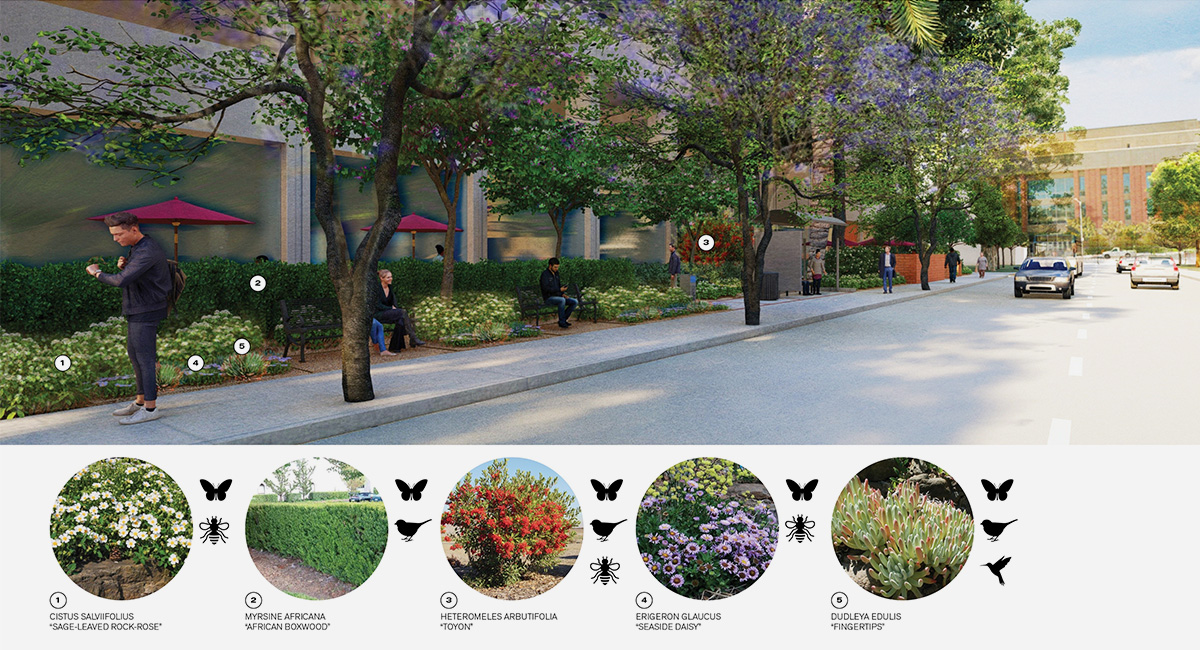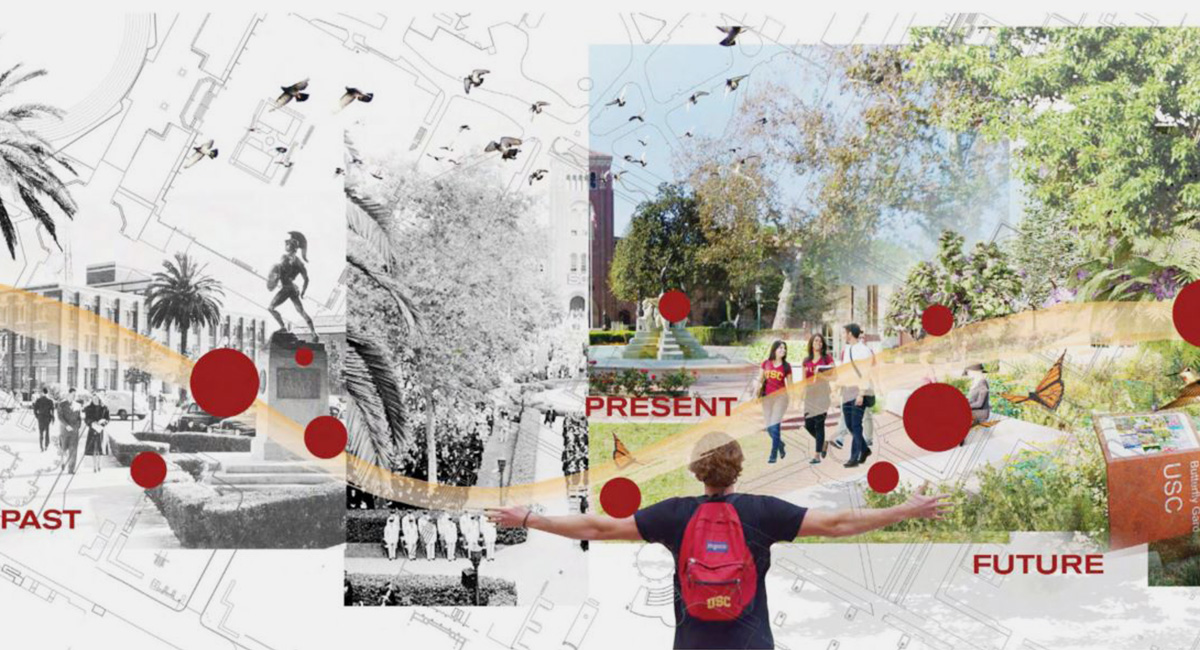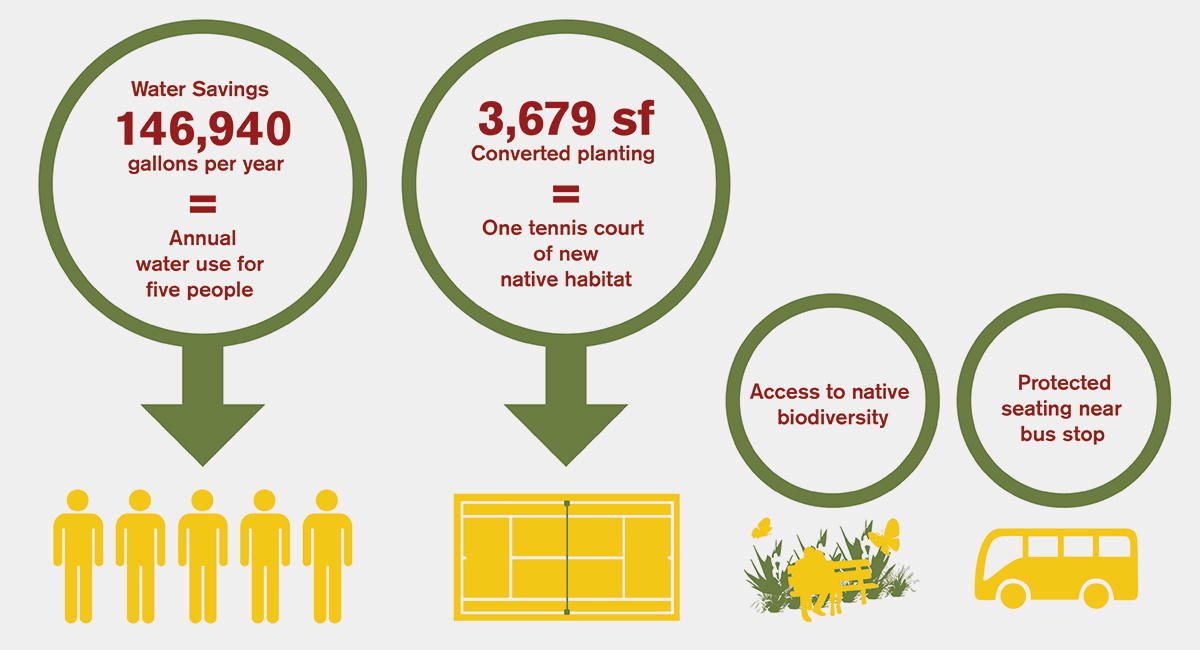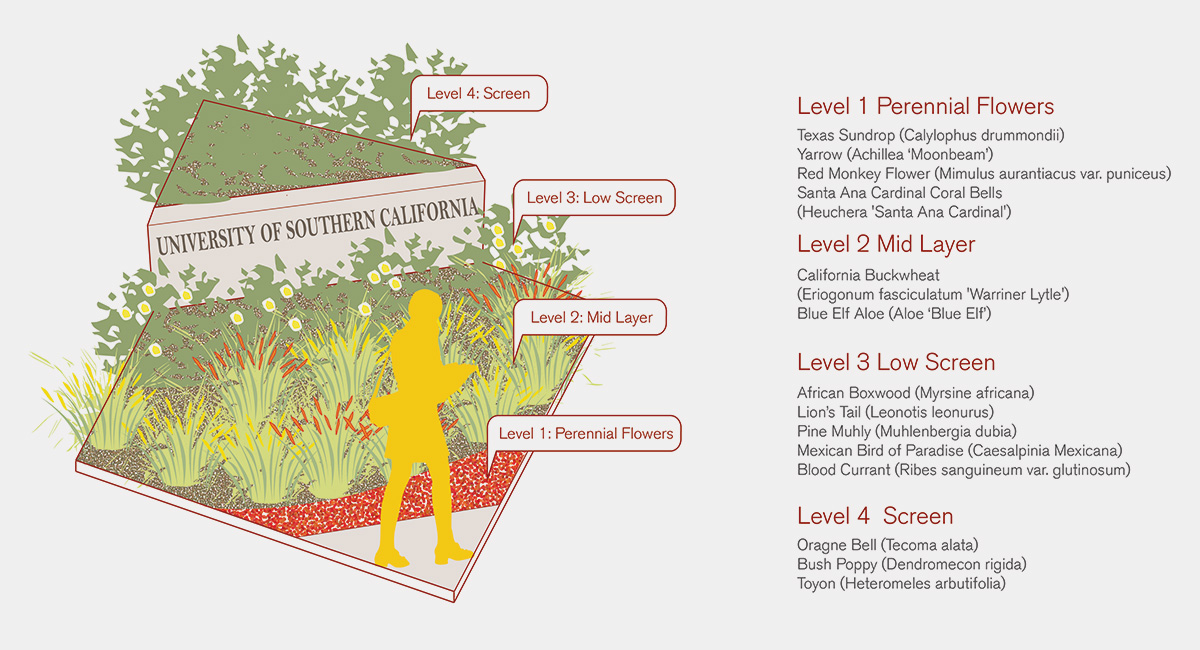



USC Native and Climate Adapted Plant Master Plan
Given: The USC campus has an iconic and beloved landscape identity. Also a given: The campus was using 1.4 times its state-mandated maximum water allowance. As temperatures rise and mega-droughts continue in California, future water restrictions will leave the campus landscape, including cooling shade trees, vulnerable to plant mortality.
USC’s new plant master plan is a toolkit for planning and implementing nature-based social and environmental resiliency and sustainability measures. Top priorities: water use reduction, biodiversity and health benefits.
The Plan is a comprehensive strategy for replacing existing turf and high-water using landscapes with California native and climate-adapted plantings. The design team evaluated 1,293 distinct campus planting areas based on plant type, irrigation method and water use. The new plan identifies landscape transition strategies for achieving 30%, 50% or 70% water use reduction. It divides the campus into eight typologies for group planting strategies, with 57 initial landscape transformation sites—and five priority pilot sites to showcase the transition to the community. The five pilot sites alone will reduce water consumption by 1.4% and the initial 57 projects will lead to a 16% reduction.
Species’ habitat are integrated into the conceptual planting designs. The campus can have a significant impact on local ecology, with habitat patches and corridors that link to nearby green spaces. Transitioning to natives will help repair natural food chains—species will then reappear and biodiversity will increase. Outdoor thermal comfort, increasingly important in Southern California, will be improved by adding native and climate-adapted trees.
Campus and community acceptance of a new landscape palette was key to the transition. Understanding that some view summer-dormant plants as unkempt and unappealing, using plants adapted to semi-arid locations—that have summer blooms—in areas where summer graduation and fall ceremonies are held will help achieve the expected landscape performance.
The Plan is guiding a visionary campus transformation: highlighting the local beauty and diversity of the Southern California region and using substantially less water.
